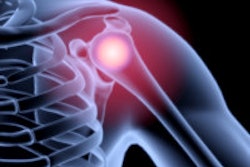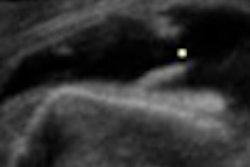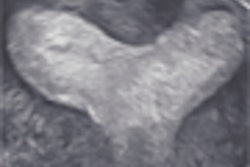Ultrasound is an effective diagnostic tool for orthopedic surgeons, and it is more cost-effective than either MRI or PET as an adjunct to radiography for imaging orthopedic conditions, according to a study from Yale School of Medicine in New Haven, CT.
"Ultrasound enhances your diagnosis since it complements x-rays and allows you to see soft-tissue pathology in real-time, as well as allowing dynamic imaging," said Dr. John Reach, who is director of the foot and ankle service in Yale's department of orthopaedic surgery and rehabilitation.
In a study by Reach and colleagues, new patients at Yale were randomized to ultrasound or nonultrasound groups. Overall, 64 patients were evaluated, with diagnoses confirmed by surgery. Results of the study were presented at the 2008 American Academy of Orthopaedic Surgeons (AAOS) meeting in San Francisco in March.
The researchers performed 486 ultrasound scans, and the diagnoses were correct except for one false-positive diagnosis of a rupture of the extensor hallucis longus (EHL) tendon. The average ultrasound took four minutes and 19 seconds of extra time after an exam. In many cases, overall time to diagnosis was decreased by using ultrasound, Reach said.
The researchers also analyzed their cost savings by using ultrasound for one month in the Yale foot and ankle service, and noted that they saved $30,000 when compared to the cost of other imaging modalities.
Reach noted that ultrasound could easily be performed by orthopedic surgeons. "It's very surgeon-friendly," he said. "It's anatomically based, it's dynamic, and it's highly portable."
An objection to the modality in the past has been its steep learning curve. However, it was not an issue in this study, according to Reach. All the ultrasound exams in the study were performed by an orthopedic fellow who had experience with 800 musculoskeletal exams with ultrasound.
Reach believes that resolution on ultrasound is better than with PET or MRI, and the technology has the additional benefit of not producing radiation. "It's very personal and individualized, and you can use the same machine in the clinic as in the operating room," he added.
Patients seemed to agree with Reach: 100% of the patients who were diagnosed with ultrasound said that it benefited their medical care, and would recommend it to a friend with similar orthopedic conditions. Ultrasound was also popular with surgeons. In 71% of the cases, surgeons felt that ultrasound significantly assisted with final diagnosis. In five cases, the attending physician requested an ultrasound for patients in the nonultrasound group to aid in diagnosis.
"Orthopedic surgeons are in an ideal place to popularize ultrasound use. We know the anatomy, and we can verify that diagnosis by using ultrasound is correct in the OR," Reach said. "Patients also found it more pleasant than other modalities."
By Barbara Boughton
AuntMinnie.com contributing writer
May 2, 2008
Related Reading
Pictorial essay: 3D ultrasound reveals shoulder pathology, March 21, 2008
Ultrasound performs well in meniscal tears, February 5, 2008
Comprehensive musculoskeletal US exam offers most value, January 3, 2008
US-guided interventional procedures boost sports medicine performance, May 3, 2007
US shows full spectrum of shoulder injuries, September 29, 2006
Copyright © 2008 AuntMinnie.com



















